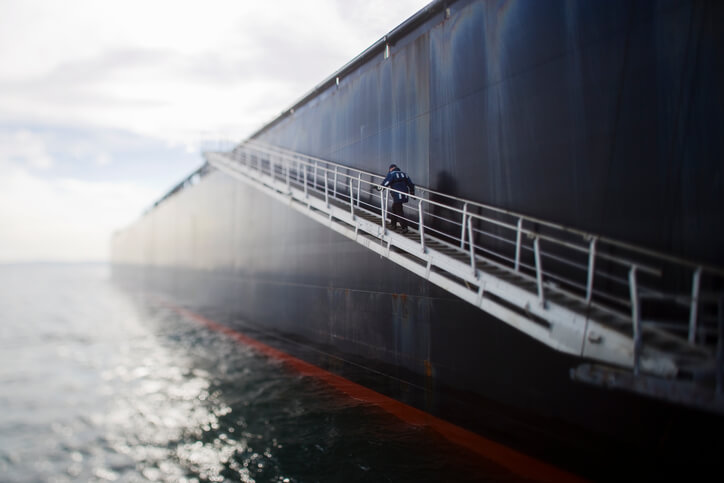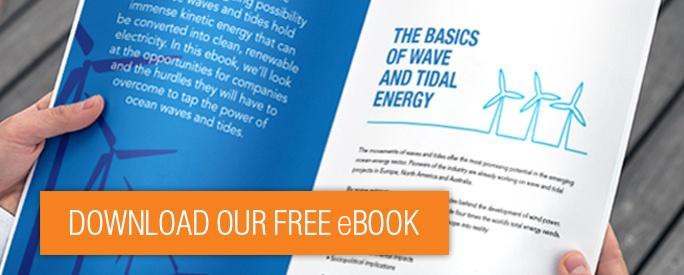Companies that feel like they’ve missed the boom in offshore wind power technology may have the chance to ride a new wave of innovation with the rise of marine energy technology.
Converting the solar and kinetic power of our oceans into cheap, practical electricity seems like a far-off hope right now, but at some point the temptation to dive deep into marine energy methods and devices will prove too irresistible to pass up.
That’s something we’re watching closely here at PMI. Supplying equipment to companies that work in the oceans is what we do. Estimates suggesting the earth’s oceans could theoretically supply up to four times the world’s total electricity demand have definitely grabbed our attention.
Admittedly, it’s unlikely the oceans will ever supply all of humanity’s energy needs. But marine energy can become part of a diverse portfolio of renewables technologies like solar, wind and geothermal that serve the world’s energy needs while reducing carbon output and limiting global warming.
Looking Back on the Rise of Offshore Wind
It’s helpful to step back and look at how quickly offshore wind power became a mature technology in Europe. In 1990, there were no offshore wind farms in European waters. At the end of 2015, more than 3,000 offshore wind turbines were up and running, according to the European Wind Energy Association.
How many people could have projected that kind of growth in, say, 1980?
Obviously, nobody knows what the future holds. Marine energy is extremely expensive to develop and difficult to deploy right now. But it might not always be.
Potential Products and Devices in the Marine Energy Sector
European companies are already developing turbines and other devices to generate power from ocean tides and waves. These are big, expensive technologies that require substantial investments of time, energy and expertise. The companies working on them hope to exploit first-mover advantage and export their technologies worldwide.
As a supplier of subsea cable management systems, we see some interesting possibilities as these technologies emerge:
- Attachment points: One of the big challenges with marine energy is fixing devices to the ocean floor. Connections must be strong enough to hold energy devices in place and built to fend off the corrosion of saltwater. And they must be unobtrusive enough to have low impact on the undersea environment.
- Underwater vehicles: In an age when self-driving cars are already on the roads of Silicon Valley, it’s easy to envision rising demand for small submarines that can be put to work monitoring, repairing and maintaining marine energy devices.
- Pipe joints: One intriguing technology combines cold water from deep in the ocean and warm tropical water at the surface and creates electricity by exploiting the temperature differential. Called ocean thermal energy conversion, or OTEC, this technology requires pipes as long as several kilometers. Flexible pipe joints can help these pipes survive in ocean currents.
This list barely skims the surface of the possibilities in this sector.
Where the Marine Energy Sector is Going
Wave and tidal energy are getting the most attention right now. Costs for commercial development are still too high for this technology to become mainstream right away, but an encouraging collection of pilot projects in Canada, Europe and Australia — combined with the work of companies developing marine power devices — could lead to discoveries that can bring these costs down and encourage further development.
At PMI, we build accessories that make it easier to use cables in the ocean. Given that all marine energy devices have to transmit electricity over cables, we’re excited about the potential of marine energy.
But we also think that companies in a broad range of industries should be exploring these technologies and looking for ways to bring new products to market. If history is any guide, the people who invent the technologies that move marine energy into the mainstream stand to be forerunners of the industry.
Four intriguing technologies hold the potential to tap into the vast renewable energy of our oceans.
Nobody expects these marine energy technologies to replace coal, petroleum or natural gas in the near future. Instead, they could become assets in a diverse portfolio of technologies that can reduce our dependence on fossil fuels and temper the effects of climate change.
Let’s take a quick look at these marine energy conversion technologies.
Wave Energy
The natural up-and-down motion of ocean waves generates large volumes of kinetic energy. Wave energy devices capture this motion and convert it into electricity.
Some wave energy devices look like ocean buoys that bob up and down. Others string together a long, snake-lake chain of floating tubes. They can work close to land or farther out in the open ocean.
Wave energy is plentiful, but it’s also problematic. Waves rise and fall in multiple directions, and their velocity changes with the weather. That can make it difficult to get a reliable constant stream of energy. Also, only a few coastlines are optimal locations for wave-energy devices.
The upside is that several prototype wave energy devices are already in the water, and they’re yielding clues on how to make wave energy more practical.
Tidal Energy
Rising and falling tides generate substantial kinetic energy. The bigger the tide, the bigger the power potential. Tides rise and fall like clockwork, so tidal energy can provide a reliable stream of energy at specific times of day.
Some tidal devices look like underwater wind turbines. Because water is so much denser than air, the turbines can turn relatively slowly and still produce a worthwhile stream of electricity. Another tidal technology creates dams that capture tidal waters and uses turbines to tap the flow, much like hydroelectric plants.
Tidal energy’s impact on the subsea environment is a big unknown. Marine species may attach themselves to the devices, causing extra maintenance costs. Building tidal basins is expensive and disruptive as well. And large numbers of subsea turbines can affect the velocity of tides, which could shake up delicate undersea ecosystems.
Salinity Gradient Energy (SGE)
Salinity gradient power exploits the energy produced when saltwater comes in contact with freshwater.
The technology uses a membrane to separate saltwater from freshwater. One kind of SGE membrane generates an electrical current on its own, while another kind of SGE membrane produces pressure that can turn a turbine and generate electricity.
These membranes anchor the technology. They must be extremely large to produce abundant volumes of energy. Right now they are very expensive and prone to fouling by algae and other aquatic life, but new companies are already trying out new membrane technologies. Innovations in nanotechnology could potentially make SGE economically viable.
SGE could also work in wastewater plants to separate saline water and create electricity to help power the plant. That small-scale function could open the door to more substantial innovations that make the technology much more practical.
Ocean thermal energy conversion (OTEC)
Water at the ocean’s surface is much warmer than water in the murky depths. OTEC uses this temperature gap to produce electricity.
A complex system pumps water from up to a mile deep in the ocean. At the surface, a power station exploits the differences between hot and cold water to produce electric current. This requires no fossil fuel, and it can generate more energy than the pumping and production costs create.
This technology works best in the tropics in areas where there is at least a 36-degree F (20 degrees C) difference between surface water and deep water. It also requires massive pipes to pump the cold water up. But the energy is extremely cheap once the power plant has been built, so it’s an intriguing option in a few specific areas of the globe.
Why We Like the Potential of Marine Energy
At PMI, we have no illusions about the challenges of marine energy conversion. But we still think companies everywhere should be paying more attention to these technologies. In Europe, there’s a strong push to get 20 percent of the continent’s energy from renewable sources by 2020. That creates an incentive for a few bold pioneers to get more prototypes into the water and see how they perform.
Those incentives could create opportunities for companies that have specific expertise. PMI is just one example: We already provide some of the world’s most advanced accessories for the subsea cables that all of these technologies will need to transmit electricity to land.
Marine energy technologies will require advanced engineering to make them cost-competitive with fossil fuels. They’ll also need advanced materials designed specifically for subsea environments.
That looks like a wealth of opportunity for innovative firms that can help bring these technologies into the mainstream.






